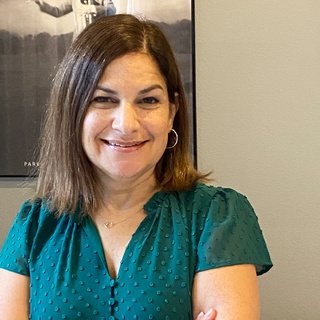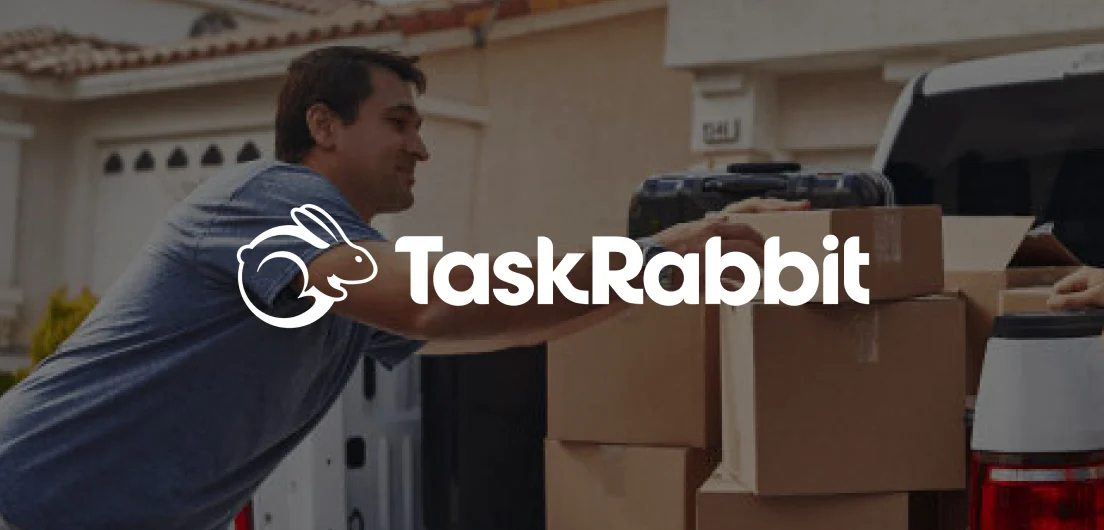You need to hire. We're here to help.
Find and hire top Graphic Designers, fast.
Get matched to 3 highly-qualified Graphic Designers in minutes.
Hire Top Graphic Designers.png)
.png)
.png)
How to hire top Graphic Designers at Braintrust
Post a job
Create an account and publish your job posting free of charge.
Review candidates
Manage and hire top talent instantly.
Get to work
We simplify onboarding, invoicing, compliance, and more.
Meet our Graphic Designer community
Braintrust is a user-owned talent platform created by and for the world’s top talent. This includes a talented network of experienced Graphic Designers available for hire.
Looking for Work

Zoe Georgiou
- Graphic Design
- Visual Design
Looking for Work

Nina Selzer
- Graphic Design
- Visual Design
Looking for Work

Sally Barlow
- Graphic Design
- Photoshop
How to hire Top Graphic Designers

Overview
Hiring a Graphic Designer involves a careful analysis of a candidate's creativity, experience, technical skills, and interpersonal traits. However, the specific requirements and dynamics can vary significantly based on the type of organization (startup vs. large company) and employment model (full-time vs. hourly).
In a startup environment, a designer might have to wear multiple hats, tackling a variety of tasks beyond their primary role. They might be required to handle everything from branding and website design to marketing collateral and social media graphics. Versatility and adaptability, therefore, become crucial traits, as does comfort with a fast-paced, sometimes ambiguous work environment. In startups, designers often have the chance to shape a brand's visual identity from scratch, which requires creativity and a strong understanding of the company's target audience and mission.
On the contrary, a larger company typically has more defined and specialized roles. A graphic designer might focus primarily on a single area, like product design, marketing design, or UX/UI. Here, depth of experience in the relevant area is vital, and designers often work within established brand guidelines. Larger companies also tend to have more structured processes and hierarchies, which requires good communication and teamwork skills.
When hiring a full-time graphic designer, the focus often lies in their potential for long-term fit and growth within the company. This includes their alignment with the company culture, willingness to commit to the company's vision, and potential to handle increased responsibilities over time. A full-time designer is generally expected to have a broad set of skills to tackle different projects and should be capable of working collaboratively with various departments within the company.
In contrast, hiring a designer on an hourly basis (or as a freelancer) is often project-specific. Here, the focus is on their specialized skills and experience relevant to the project at hand. Hourly or freelance designers need to be excellent self-managers, as they may work independently and juggle multiple client projects. The ability to deliver high-quality work on schedule is paramount, as is a clear understanding of the project's scope to prevent tasks from ballooning beyond the agreed-upon hours.
Whether you're a startup or a large company, hiring full-time or hourly, it's crucial to have a clear understanding of your specific needs and work environment to ensure that you find a graphic designer who is the right fit for your team. Remember that successful design work is not just about creating visually appealing outputs—it's about effectively communicating your brand's message and values to your audience.
Portfolio
A designer's portfolio is their visual resume. It's a collection of their work, demonstrating their styles, creativity, and skills. It's crucial to pay close attention to the breadth and depth of the portfolio.
In the portfolio, you should look for a range of styles and techniques, not just the aesthetic you like. This demonstrates flexibility and the ability to adapt to different project needs. You should also look for examples of different types of design work: print design, digital design, branding, illustration, and so forth, to gauge their versatility.
Also, consider the thinking behind the design. Good designers should be able to explain the reasoning and process behind their work, showing their problem-solving skills. Look out for designs that not only look good, but also effectively communicate a message or solve a problem.
Lastly, the designer should be comfortable using design software like Adobe Photoshop, Illustrator, and InDesign. For web or app design, skills in UX/UI design tools like Sketch, Figma, or Adobe XD may be required.
Relevant Experience
When looking at a designer's experience, the number of years in the field isn't the only factor to consider. Their experience should ideally be relevant to your specific needs.
For example, if you're a tech startup, a designer who has previously worked with tech firms will be familiar with the visual language, user expectations, and industry trends in that sector. They'd likely be more effective at reaching your target audience compared to a designer who specializes in, say, the fashion industry.
Beyond industry experience, you might also look for experience with specific types of projects. For instance, if you need a designer for a packaging design project, someone with similar prior work would be a good fit.
In terms of technical skills, the designer should have mastery over design tools typically used in your industry. They may also need to understand specific industry-related software or platforms.
Technical Skills
Technical skills are a fundamental requirement for any graphic designer. The designer should be proficient in standard design software like Adobe Photoshop, Illustrator, and InDesign for creating and editing digital images, illustrations, and layouts.
For web or app design, familiarity with UX/UI design tools like Sketch, Figma, or Adobe XD is crucial. They may also need to understand basic front-end languages like HTML and CSS, especially if they'll be working closely with developers or implementing the designs themselves.
Other technical skills might include proficiency in animation software like Adobe After Effects, 3D modeling software like Blender, or prototyping tools like InVision.
It's also essential that the designer understands the technical requirements of different design mediums (print vs. digital), such as resolution, color spaces, file formats, and so forth.
Creativity
Creativity is a fundamental trait of any good designer. It's what enables them to create unique, attention-grabbing designs and solve problems in novel ways.
In a portfolio, creativity can be seen in the originality of the designs and the use of color, typography, and imagery. However, creativity isn't just about making things look good. It also involves thinking creatively about how to communicate a message effectively or make a design more user-friendly.
For example, a creative designer might find an innovative way to organize information on a website, making it easier for users to navigate. Or they might come up with a unique branding concept that sets a company apart from its competitors.
In terms of tools, creativity isn't tied to a specific software or platform. However, digital tools can open up new possibilities for creative exploration. For instance, a designer who is proficient in 3D modeling software might be able to create distinctive, immersive graphics that wouldn't be possible with 2D design tools alone.
Understanding of Design Principles
Understanding of basic design principles is a core competency for a graphic designer. These principles include color theory, typography, balance, contrast, hierarchy, and layout. They serve as a guide for creating effective and visually appealing designs.
For instance, knowledge of color theory allows a designer to create a color palette that sets the right mood and attracts the target audience. Understanding typography can affect readability and the overall message.
Knowledge of layout principles helps a designer organize elements logically and attractively, guiding the viewer's eye across the design. Understanding hierarchy is critical in creating designs that clearly communicate the most important information first.
In terms of technical skills, a good understanding of design principles generally requires proficiency in design software like Adobe Photoshop, Illustrator, and InDesign, as these tools provide the features needed to apply these principles effectively. For web design, understanding how these principles translate to a responsive environment (where the layout adjusts to different screen sizes) is also crucial.
Communication Skills
Good communication skills are essential for a graphic designer. They need to understand the needs of their clients, articulate their ideas clearly, and accept feedback positively.
Designers often need to collaborate with other team members, such as copywriters, marketers, and web developers. Hence, they need to be able to communicate their ideas and requirements effectively to these team members.
When presenting designs, a good designer can explain the rationale behind their design choices and how these meet the project objectives. This shows that they don't make arbitrary design decisions but base their choices on sound reasoning.
Apart from verbal and written communication skills, designers also communicate visually. Proficiency in design software is required to turn their ideas into visual form. Tools for collaboration and project management, like Slack or Trello, can also be important in maintaining effective communication in a team setting.
Problem-Solving Ability
Every design project is essentially a problem-solving task. Whether it's finding a way to communicate a complex idea simply, designing a user-friendly website layout, or creating a logo that communicates a brand's identity, a designer needs to find solutions that meet the project's objectives.
A good designer approaches a design project as a problem to be solved rather than just an opportunity to create something visually pleasing. This involves researching, brainstorming, sketching, and iterating until they arrive at the best solution.
This ability isn't tied to a specific tool or software. However, some digital tools can aid the problem-solving process. For instance, mind mapping tools can assist in brainstorming, while prototyping tools can help test the usability of a design solution before it's fully implemented.
Professionalism and Reliability
Professionalism and reliability are important traits in any employee, including graphic designers. Designers should be able to meet deadlines, stay within budgets, and respond promptly to communications.
Professionalism also includes respect for clients and colleagues, adherence to ethical standards (such as not using copyrighted materials without permission), and maintaining confidentiality when required.
Reliability involves consistently delivering high-quality work and meeting expectations. A reliable designer will also be proactive in communicating about any potential issues that might affect their work.
While these traits are more about attitude and work habits than technical skills, some tools can assist in demonstrating professionalism and reliability. For instance, project management tools can help a designer manage their tasks and deadlines effectively. Time tracking tools can show that they respect timelines and work efficiently. Finally, a professional email demeanor and good etiquette in virtual meetings can be a plus in today's digital work environment.
Expert Resources for Hiring Graphic Designers
Frequently Asked Questions
What is the cost of hiring a graphic designer?
The cost of hiring a graphic designer varies greatly depending on the scope of the project, the designer's experience and skills, their geographical location, and whether you're hiring full-time, part-time, or freelance. For a full-time, in-house designer in the US, the salary can range from around $40,000 to over $80,000 per year. However, this can be higher in major tech hubs or for senior-level designers. Freelance designers typically charge by the hour or project, with rates that can range from $25 to $150 per hour. Bear in mind that when hiring, you may also need to consider additional costs like recruitment agency fees, job posting fees, or costs related to onboarding and training.
What is the best way to hire a graphic designer?
Hiring a graphic designer begins with identifying your specific needs: the scope of work, the skills required, and the type of employment (full-time, part-time, freelance). Once you've clarified these, you can write a comprehensive job description to attract the right candidates. You can post this job ad on general job boards, design-specific job sites, or platforms like LinkedIn. If you're open to hiring freelancers, sites like Braintrust can be useful where you can post a job for free and get vetted talent in 48 hours. Networking can also be a great way to find designers; consider reaching out to your professional network or attending design industry events. Reviewing portfolios is key in shortlisting candidates. Lastly, conducting interviews and possibly a design test can help evaluate a candidate's communication skills, problem-solving abilities, and technical skills.
What do freelance graphic designers do?
Freelance graphic designers provide design services on a project-by-project basis to various clients. They work independently, not employed by a single company full-time, which allows them to work on a wide range of projects. Their services may include creating logos and branding materials, designing digital and print marketing collateral, website design, product packaging design, illustration, and more. They manage all aspects of their work, from understanding the client's brief, conceptualizing design ideas, creating the artwork, to revising designs based on feedback. They also handle their own business operations, such as marketing their services, communicating with clients, managing contracts, and setting their schedules and rates.
What are the benefits of hiring a graphic designer?
Hiring a graphic designer brings several benefits. Firstly, a professional designer can create visually appealing and effective designs that enhance your brand image and communication. Good design can attract your target audience, increase brand recognition, and boost your marketing efforts. Secondly, a designer brings a unique set of creative and technical skills that might not exist within your team. They can help you solve problems, communicate complex ideas visually, and bring fresh perspectives. Thirdly, hiring a designer can save you time and resources in the long run. They can produce high-quality work efficiently, and their expertise can prevent costly mistakes, like a poorly designed logo or website. Lastly, a good designer understands the latest design trends and technologies, which can help keep your brand relevant and competitive.
How do graphic designers negotiate prices?
Graphic designers negotiate prices by first understanding the value they bring to the table through their expertise, skills, and experience. They research market rates and the client's budget to set a baseline for negotiation. Next, they present a clear breakdown of what their services entail: the design process, rounds of revisions, the final deliverables, and any additional costs such as stock images or fonts. Transparency about what the client is paying for can justify the price. In negotiating, designers need to communicate the value of good design and how it can benefit the client's business. They also need to be prepared to justify their rates, possibly by showing previous work or client testimonials. Lastly, they should be open to negotiation but also set boundaries to ensure that their work is fairly compensated.
Why do small businesses need graphic design?
Small businesses need graphic design to build a strong brand identity and effectively communicate with their target audience. A professionally designed logo, website, and marketing materials can establish credibility and create a positive first impression. Good design can set a business apart from competitors, making it memorable in the minds of customers. Graphic design can also improve marketing efforts. Whether it's social media graphics, brochures, or email newsletters, visually appealing and well-designed content can attract more attention and engagement. Furthermore, a good designer can create a user-friendly website or app that improves customer experience. In essence, investing in professional graphic design can contribute to a small business's growth and success.
Who needs a graphic designer?
Almost any business or organization that needs to communicate visually with its audience can benefit from a graphic designer. This includes businesses of all sizes across various industries, non-profit organizations, educational institutions, government agencies, and more. Whether it's creating a logo and brand identity, designing a website, producing marketing materials, or even designing product packaging, a graphic designer can help. Individuals may also hire graphic designers for personal projects, like creating invitations for an event, designing a personal website, or creating custom artwork. Additionally, publishers, magazines, and media companies often need graphic designers to layout publications, create illustrations, or design covers.
How much do graphic designers make an hour?
Hourly rates for graphic designers can vary widely depending on their experience level, geographical location, and the type of work required. Entry-level or less experienced freelance designers in the U.S. might charge anywhere from $25 to $50 per hour. More experienced or specialized designers can charge $75 to $150 per hour or more. Rates can also vary internationally, with designers in high-cost-of-living countries generally charging more than those in lower-cost countries. It's also worth noting that freelance designers need to account for their own taxes, health insurance, and other business expenses when setting rates, which can make them higher than the hourly wage equivalent for a full-time job.
Get matched with Top Graphic Designers instantly 🥳
Hire Top Graphic Designers


.webp)

.webp)





